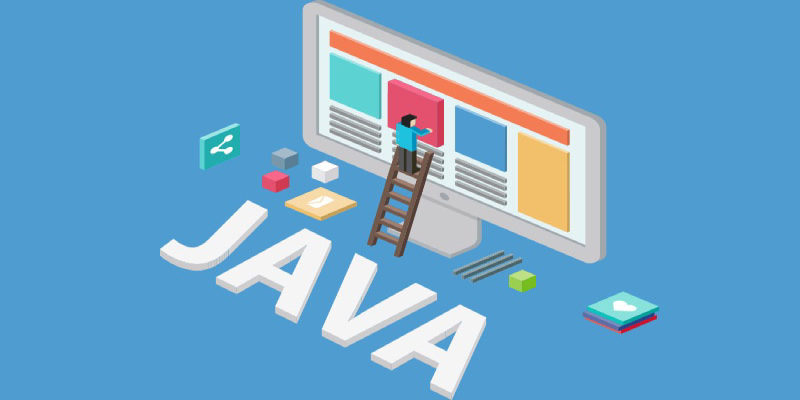
Latest Technologies of Java and Trends to Stay Updated in 2020
Java has been the most powerful programming language of the virtual world and over 10 billion devices using its applications are maintaining its legacy from years. The language has a strong compatibility feature to support almost any system. Thanks to numerous innovations and updates, the technology has completely transformed to an amazing extent and become more compatible, scalable and flexible than before. The last year saw a rapid growth in Java’s advancement and the transformation will hugely impact the Java development services.
In 2020, Java has injected and predicted to inject more innovative, refined, improved as well as user-friendly trends for developers. These latest trends in Java will further impact the application development process. From open-source and mobile apps, Java is set to surprise and boost the Java web development company development work. Java dominates the coding language industry, as it is trending will bring a huge transformation. In a study, it has been observed that the most popular language among the developers is the JavaScript. In this blog, the latest technologies and trends that influence the platform are mentioned.
1. Java SE 10
The reason why Java is preferred by more than 10 million developers for mobile and chat web application development is due to the ability to offer a large set of libraries. The libraries with numerous open-source tools help to build powerful apps for enterprises. With the release of Java SE 10, it is built with the efforts of the OpenJDK community, it comprises of amazing features ready to revamp the app development experience. Due to regular emphasis on the innovative approach, with over 15 billion cloud-connected JVMs, Java is without doubt crowned as the number one choice among the developers.
2. Impact on Java Language
Jython and several other scripting languages are coded in the Java itself. Jython, as the name reveals, is inherited from the original Python language. The modifications in the Java updates are going to affect these programming languages as well. This is why programming languages like Python, Perl, and PHP have become more innovative and compelling than ever.
3. Reactive Java
Reactive programming is not a new concept, but with new innovations, it has become more relevant. The data volume is growing; the processing power is increasing. Users look for software integrity, regular updates, and continuous synchronization. Processing several events is quite annoying in the backend for the Android platform. It is the time to simply switch to the programming paradigm where the source and the consumer of the data are defined. RxJava is one of the latest Java technologies and is the reactive extension for the JVM. When a consumer is connected to the source of data, RxJava pushes it to the end-user. This library is great support for the Java web development company to build asynchronous and concurrent Java applications. It also makes the code appear less bulky as well as elegant.
4. Data Science
You can use Java for any purpose, and data processing is no exception at all. Java has many features ranging from high-performance, general-purpose, and compiled language. No matter which framework you opt, Hadoop or Apache Spark, it is well-supported by Java programming language. Thanks to the availability of a large community, there are several libraries for data processing, machine learning, and cloud computing. Keeping the production code, & data processing in the same ecosystem is a great idea. Java is not perfect in all scenarios as it is a wordy programming language, and isn’t the best fit for the R&D work. That’s why data scientists usually opts R and Python programming language. R is more in demand as it was created for statistics and research work only. Despite that, Java is used in the Data Science all because of its flexibility, performance and smooth integration of the code into an existing interface.
5. Microservices to Serverless Architecture
The most significant trends in the software design are the transfer from microservices to the serverless architecture. The current Java technologies are implementing it as well. The microservices architecture means all the components can be changed or replaced easily as well as independently. The serverless architecture means no use of the server for building and deploying the code. But the best feature is the breaking of modules into smaller parts than the microservices. This is of great help during the infinite scaling. Also, the developers are offered a chance to visualize the complex process in a simple manner to improve performance, reduce bottlenecks and make prominent decisions. In short, the serverless process gives you control over the architecture of the solution and scalability.
So, how serverless architecture is possible with Java? AWS Lambda is a serverless computing platform and is obtained by building an AWS Lambda Function. For advanced functionality go for the Service Blocks as they are basically cloud-native apps that combine microservices with the scalability of the serverless functions. Service block comprises of Service Core and Functions. A service core is responsible for the communication and dispatching of events to the serverless functions within a block.
6. Unit Testing
Another popular Java development trend to consider in 2020 and beyond is Unit testing. When serverless architecture is implemented then unit testing becomes a must-have requirement. Developers need to upgrade their unit testing skills and it can be done quickly through the documentation but the basic skills to upgrade to the latest development trends must be known.
Frequently Asked Questions

1. What is the latest technology in Java?
The latest Java technologies implement global trends in software design and development. This comprises of reactive development, serverless architecture, and data science. All these trending technologies are discussed in the blog earlier.
2. What is J2EE used for?
Enterprise applications need different characteristics including Availability, Security, Persistence, and Scalability, which is highly complex to develop using Java SE. J2EE is designed to eliminate this complexity by offering the required stuff including programming model, APIs, and Runtime environment and several more. J2EE development concentrate on business requirements and all other stuff will be taken care of with the platform.
3. Is Java still relevant in 2020?
Despite being 2 decades old, the Java language is incredibly stable, secure, robust and not going to retire anytime soon. This makes Java as the most desirable languages among developers and business enterprises in 2020. JavaScript is a popular language among developers who work on server-side and client-side programming.
4. What are the latest trends in software development?
2020 is the year where we will see some of the most exciting technologies. These will become commercially viable, and others finally go mainstream. Some trends that will rule the world of technology includes edge computing, machine learning, blockchain and artificial intelligence. They will become mainstream and reach larger adoption.
Wrapping Up:
The above trends and latest Java technologies will be delivered anytime and it seems unstoppable. The latest Java technologies are based on global trends as per the design and development work. This comprises of reactive development, serverless architecture, as well as data science. The best thing about the Java platform is the balance between the stability and innovation for business enterprises and developers. You can leverage its powerful features for your business by hiring Java developers from a reputed development company. There are plenty of reasons why Java is among the top technologies for enterprise application development. It is a combination of simplicity and robustness, making it a perfect choice for Android and web application development.

